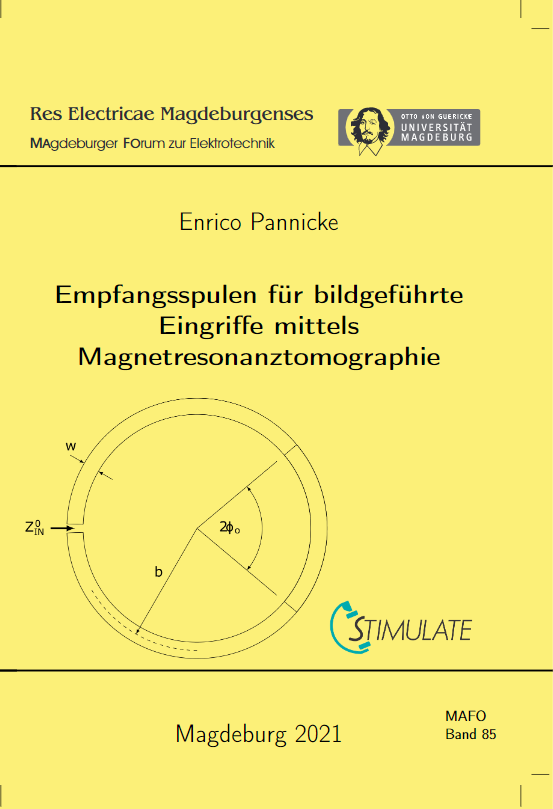Vol. 85 (2021): Pannicke, Enrico: Empfangsspulen für bildgeführte Eingriffe mittels Magnetresonanztomographie

Magnetic resonance imaging offers superior soft tissue contrast, the ability to align slices at will, and non-invasive thermometry. For performing minimally invasive image-guided interventions, these features provide an invaluable advantage over other imaging modalities, such as computed tomography (CT). This is because the superior soft tissue contrast makes it possible to visualize even small target structures, thus enabling reliable puncture. The selection of oblique slices also makes it possible to safely bypass any risk structures. Nevertheless, the performance of such procedures under MR imaging has never been able to gain widespread acceptance over the past 20 years. A major reason for this is the complex workflow of such procedures, which are only performed at a few centers due to the lack of standardized instruments and procedures. The solutions established there are characterized by a high degree of individuality and poor transferability. The so-called „MR-receive coils“ are of enormous importance for the safe performance of such interventions - after all, they essentially determined the image quality. Therefore, the aim of this dissertation is to investigate a concept for a dedicated interventional MR receive coil. The purpose of this concept is to significantly simplify the placement and preparation of an MR receive coil required for the intervention. To this end, new approaches to so-called „power matching“ and „active decoupling“ are presented. These allow to redefine the usual topologies of MR receive coils and to gain further degrees of freedom in the implementation. This approach differs fundamentally from comparable studies that consistently rely on component substitution to increase flexibility. The approaches presented are analyzed in detail and corresponding procedures for correct dimensioning are developed. The latter thus serve as a basis for an engineering approach and are validated experimentally. Both sub-approaches were integrated in the demonstrator of a dedicated interventional coil and evaluated by means of laboratory and MR measurements. It could be shown that the newly introduced approaches provide comparable results to the state of the art established methods. In summary, it can thus be stated that the contributions presented in this work enable the implementation of interventional „disposable“coils.
ISBN: 978-3-948749-12-5
DOI: https://doi.org/10.24352/UB.OVGU-2021-096

